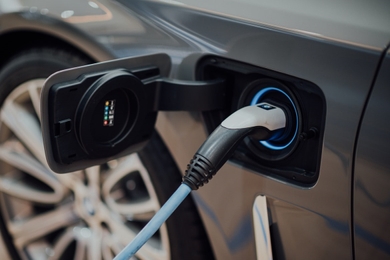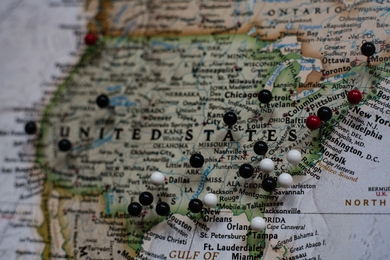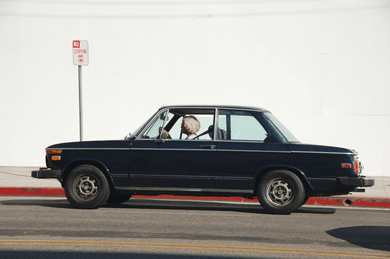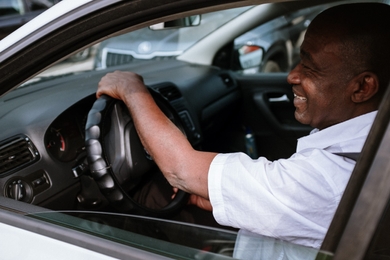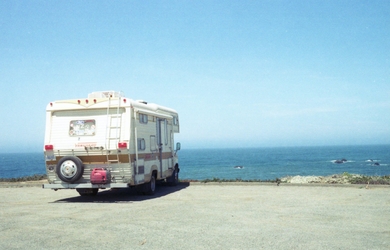Do I Need Gap Insurance if I Have Full Coverage? | Gabi
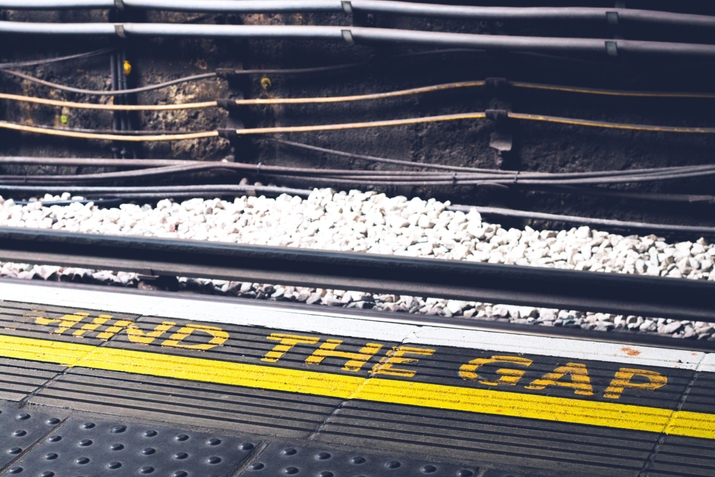
Gap insurance — also referred to as an acronym of Guaranteed Asset Protection — is a type of car insurance designed for drivers who still owe on their vehicles. Whether you have an auto loan (original or refinanced) or are leasing, buying a gap insurance policy is worth considering, especially if there is a chance of ever owing more on your vehicle than it is actually worth, which can often happen with new cars purchased from the dealership.
After some accidents, the at-fault insurance company may deem your vehicle “totaled.” This means that it would cost more to complete the proper and necessary repairs than the vehicle is worth, so they are instead willing to simply pay you for the car’s actual cash value (ACV).
If you owe more to the bank than your totaled car is worth, though, there will still be a debt owed… which you may or may not be able to cover unexpectedly. This is where gap insurance coverage will step in.
Key Takeaways
- If you total your car or it gets stolen, gap insurance will reimburse the difference between your vehicle’s market value at this time and the balance of its loan or lease.
- Gap insurance is only designed for drivers who still owe on their vehicles.
- If your vehicle is likely to depreciate quickly or you have a lengthy loan term, putting you in a dangerous negative equity situation, it’s worth considering gap coverage.
- Lease gap insurance may be incorporated into the costs if you lease your car (this information should be enclosed in the paperwork).
- If you’d like to supplement your auto policy with gap coverage, you may purchase it either from car dealers or from your insurer.
- There are some alternatives to gap insurance, such as loan/lease payoff, new car replacement, and better car replacement.
Table of contents:
- How Does Gap Insurance Work?
- What Does GAP Insurance Cover?
- Do I Need GAP Insurance if I Have Full Coverage?
- Is GAP Insurance Worth the Money?
- How to Get Gap Insurance Coverage
- Alternatives to Gap Insurance
- Gap Insurance FAQs
How Does Gap Insurance Work?
Let’s say your vehicle was totaled in an accident. If the other driver is at fault, their liability insurance policy would cut you a check for the value of the vehicle; if you are at fault and have collision coverage, your car insurance company would do the same.
A problem that arises, though, is if you have negative equity in that vehicle at the time of the accident — otherwise known as being “upside down.” In this case, the check you receive for the value of your car won’t actually cover what you still owe to the bank.
Instead, you would have to cover the difference out of pocket. Depending on how much negative equity you hold, this might mean making a significant payment to your lender (which you may not be able to cover), all while also looking for a new car you can afford at the dealership. If you sustained any injuries or missed work due to your accident, or have a high deductible to cover from an at-fault accident, this could further compound the financial strain.
If you had gap insurance, though, you would be protected for your full auto loan amount. The policy would kick in to cover the difference between what the insurance company offers for your totaled vehicle and what you still owe the bank. Whether that delta is $5 or $15,000, you’re covered, and you won’t need to dip into savings to make that final loan payment.
What Does GAP Insurance Cover?
As the name implies, GAP insurance is intended to cover the delta — or gap — between what you owe and what your totaled vehicle is worth. This coverage is especially important for borrowers who opt for:
- a small down payment
- long car loan terms
- a very high-interest rate
- low monthly payments on their auto loan
- an auto lease (gap coverage is sometimes included in your lease agreement)
That’s because the depreciation on their vehicles often happens at a faster rate than the pay-down of their loan balance.
This means, though, that gap insurance is only designed for drivers who still owe on their vehicles. If you own your car outright and don’t carry an auto loan, this coverage serves no purpose for you. That’s because there cannot be a “gap” for the coverage to fill.
Do I Need GAP Insurance if I Have Full Coverage?
You might be wondering to yourself: Is buying GAP insurance worth it, especially if I already pay for full coverage auto insurance? Well, if there is a chance of you ever being upside down on your auto loan — regardless of car insurance policy coverage — you need to consider a gap policy.
Your insurance company will pay for your vehicle if you have collision insurance and you’re in an at-fault accident. You’re also covered if the car is a total loss in some other way (stolen, vandalized, etc.) and you carry comprehensive coverage. However, the amount you’ll receive from your auto insurance company will only be what the vehicle is worth. If you owe more than that to the bank, you’ll still be responsible for the difference.
Gap insurance coverage will protect you regardless of the type of total loss you endure if you owe more than your car’s value.
Is GAP Insurance Worth the Money?
Can you afford a sudden auto loan payment that could potentially be thousands of dollars? Can you afford that plus your auto insurance deductible? What if you are unable to work at the time due to an injury from an accident?
If there are any concerns as to whether your current savings could float you and your family following a bad accident — regardless of fault — it’s worth looking into gap insurance. This is especially true if your vehicle is likely to depreciate quickly or you have a lengthy loan term, putting you in a dangerous negative equity situation.
For only a few dollars a month, you can protect yourself and your bank account with gap coverage. And to most of us, that peace of mind is well worth the money.
How to Get Gap Insurance Coverage
If you’d like to supplement your auto policy with gap coverage, you may purchase it either from car dealers or from your insurer. You can get a free quote from Gabi – we work with many insurance companies offering gap insurance (such as Allstate or Nationwide).
Sometimes insurers have certain requirements when it comes to gap coverage. They may require that your vehicle isn’t older than a certain model age or that you have the original lease or loan on it. For more information, you can contact one of our licensed Gabi advisors.
Alternatives to Gap Insurance
There are some alternatives to gap insurance, namely:
- Loan/lease payoff
Loan/lease payoff will also protect you if your car is stolen or totaled. This type of coverage, unlike gap insurance, can be purchased for used cars. Also, it won’t pay the whole loan amount that you still owe on your vehicle – it usually covers a set percentage (around 25%) of your car’s ACV (actual cash value).
- New car replacement
This type of coverage will reimburse your vehicle if it gets totaled. The difference between new car replacement and gap insurance is that the latter will pay out the actual cash value of your car, while new car replacement will provide money for a brand new vehicle of the same make and model (minus the deductible). It usually applies to newer cars.
- Better car replacement
You may be denied buying gap insurance or loan/lease payoff if you don’t have a new vehicle. As an alternative, you may purchase better car replacements which will pay out money for the same class and basic model type.
Gap Insurance FAQ
- Where can I buy gap insurance?
You may purchase this optional coverage either from car dealers or from your insurer. You can get a free quote from Gabi – we work with many insurance companies offering gap insurance (such as Allstate or Nationwide).
- How do I cancel gap insurance?
You need to contact your auto insurer through which you obtained gap insurance. It may be necessary to fill out removal request documents.
- How long does it take to get a gap insurance refund?
It depends on your insurance company’s policy and the refund method and may take up to a couple of weeks.
- How do I find out if I have gap insurance?
Lease gap insurance may be incorporated into the costs if you lease your car (this information should be enclosed in the paperwork). If your car is financed with a car loan, you may be required to add gap insurance to your car insurance coverage by your lender (as a supplement to comprehensive and collision coverage).
- How much does gap insurance cover?
If your vehicle is totaled or stolen, gap insurance covers the difference between your vehicle’s market value at this time and the balance of its loan or lease. It complements the payout from comprehensive or collision coverage, minus your deductible (although sometimes gap insurance can cover the deductible as well).
- Which insurance companies offer gap coverage?
Gap coverage is offered by the nation’s top insurers, such as:
– Allstate
– Nationwide
– Safeco
– Travelers
You can get a quote from these companies through Gabi – simply sign up here and get the best deal today!

